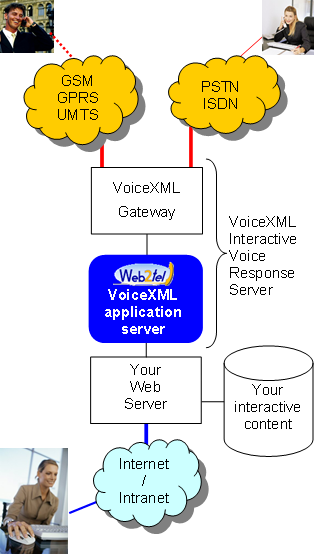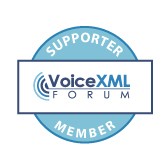
About VoiceXMLVoiceXML is a language of the XML family. It is specifically designed to describe voice user interfaces. Its primary goal is to bring to speech applications the methodologies and tools which made the success of the Web. VoiceXML actually is to speech applications what HTML is to visual applications. The main strength of VoiceXML is in standardization. A traditional IVR application can function only on servers of the operator owning its proprietary technology. On the contrary, VoiceXML applications are portable. They can function on the most appropriate servers at each stage of their lifecycle. A VoiceXML application is made of multiple resources:
Those resources are stored in an application server. They are loaded via HTTP, HTTPS or, optionally, other protocols. They are played by a dedicated server called "VoiceXML Gateway". This is the only server actually connected to the telephone network. The resources may be static of dynamic. Interpretation of those resources by the VoiceXML Gateway lets users access the desired interactive content. |
 |
||
An Internet standard for the telecoms worldA preliminary prototype of VoiceXML, called PML (Phone Markup Language) came to life in 1995 at Bell Labs, the research arm of Lucent Technologies.
|
|||
Copyright © 2004-2006, Web2tel Qualifun - All rights reserved
